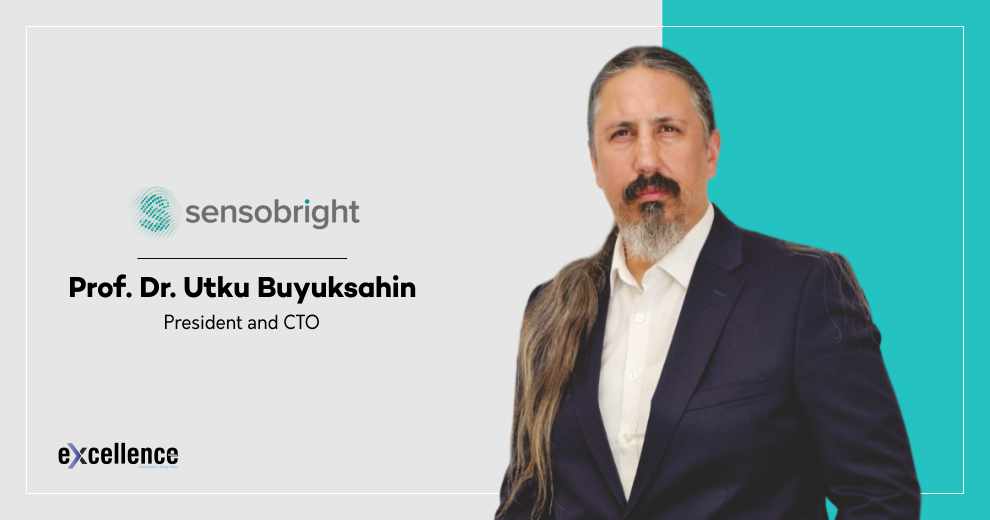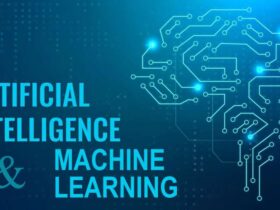In a world where machines are gaining sight, sound, and mobility at lightning speed, one sense has remained elusive—touch. But for Prof. Dr. Utku Buyuksahin, this missing piece became the starting point of a revolutionary journey. As the President and CTO of Sensobright Industries, he is not just building technology—he is redefining the boundaries between human and machine interaction.
A Vision Sparked by a Simple Question
Prof. Dr. Utku Buyuksahin’s journey into business leadership began not in a boardroom, but in a research lab—with a question that was both simple and deeply profound: “Why can’t robots feel the world the way humans do?” As a seasoned professor in advanced mechatronic systems, he had dedicated years to exploring how machines interact with their environments. While robots had made impressive strides in replicating human senses—seeing, hearing, even smelling better than humans—the sense of touch remained elusive.
For Prof. Dr. Utku Buyuksahin, this gap represented more than a technical limitation; it felt like uncovering a missing piece of the puzzle. Touch, after all, is fundamental to how humans learn, move, and make decisions. It is the cornerstone of intelligent interaction—yet completely absent from most robotic systems. This realization became the driving force behind Sensobright.
Determined to bridge this gap, the innovator set out not only to mimic the human sense of touch in machines but to surpass it. His vision was bold: to create tactile sensors capable of detecting everything the human finger can—force, pressure, shape, shear, friction, and even pain—with resolution that exceeds human capability. These sensors were designed to operate across various materials, shapes, and environments, ensuring adaptability and durability.
However, Prof. Dr. Utku Buyuksahin quickly recognized that raw touch data alone wasn’t enough. For machines to truly benefit from data, they needed the ability to interpret and respond to it. This insight led to the development of SensobrightAI—a cutting-edge real-time AI platform that transforms tactile data from its high resolution tactile sensors into intelligent decisions. “This combination of human-like sensing and machine-level processing is now powering everything from robotic hands, grippers, and surgical tools to safety systems and balance mechanisms for humanoid robots,” says Prof. Dr. Utku Buyuksahin.
Bringing Human-Like Touch to the Machines of Tomorrow
Sensobright Industries is transforming the way machines interact with their surroundings by delivering human-level touch perception across industries—from robotics and MedTech to automotive and aerospace. At its core is a proprietary optical tactile sensor system, offering superior sensitivity, resolution, and adaptability compared to traditional sensors. These sensors are capable of detecting subtle variations in force, pressure, and texture, making them ideal for demanding use cases across robotics, MedTech, automotive, and other advanced industries.
What truly differentiates Sensobright is its ability to tailor solutions to meet the specific requirements of each client and application. The sensors function reliably in harsh environments—resistant to liquids, immune to magnetic interference, and operable across a wide temperature range from -40°C to 90°C. They also offer seamless integration with platforms such as Windows, macOS, Linux, ROS, Android, and Nvidia Jetson/Xavier series, ensuring smooth compatibility with a wide variety of ecosystems.
Sensobright’s tactile systems are enhanced by SensobrightAI, an advanced real-time AI platform that converts raw sensor data into actionable insights. This combination of high-resolution tactile sensing and intelligent processing provides a complete, plug-and-play solution for enabling touch-based interaction across numerous fields.
In humanoid robotics, SensobrightAI is the core technology behind three main applications: gripping and manipulation, balance and mobility, and robotic safety.
For gripping and manipulation, SensobrightAI works with Fingertip Tactile Sensors (FTS) to let robots identify objects through touch—detecting shape, orientation, grip points, and pressure. It converts this data into natural-language-like outputs such as “I am holding a pencil” or “Apply less force.” These messages can be shared over USB, LAN, Wi-Fi, Modbus, Bluetooth, or digital signals.
In balance and mobility, the Pressure Sensing Surface (PSS) helps robots stay stable on uneven ground or when carrying loads. It analyzes pressure shifts and center of gravity, providing real-time feedback like “Tilt body 2° back” to maintain balance and improve mobility.
The Robotic Safety System (RSS) uses proximity sensing to detect people and objects without contact. Paired with SensobrightAI, it creates situational awareness, sending messages like “Human detected—reduce speed.” With no blind spots, RSS improves safety in shared spaces like hospitals, homes, and factories.
Outside robotics, SensobrightAI is used in healthcare, enabling laparoscopic tools to detect cancerous tissues and internal bleeding by touch, helping prevent the spread of disease. It also powers Smart Surface technology, turning flexible surfaces into intelligent interfaces with shape, gesture, and depth recognition. With high durability, liquid resistance, and hygiene-friendly design, it’s ideal for medical and aerospace use. When paired with SensobrightAI, it distinguishes contact types and supports commands like “Swipe right” or “Dim the lights.”
Leading from the Front: Innovation in Action
As President and CTO of Sensobright Industries, Prof. Dr. Utku Buyuksahin guide both the strategic direction and technological development of our products. Having founded the company and invented the core technology, he has been involved in every stage of its journey. Creating the world’s highest-resolution tactile sensor was a key milestone.
Now, the upcoming launch of SensobrightA— the proprietary platform that allows robots to understand objects purely through touch—marks another major step forward. This isn’t just a product release; it’s a strategic breakthrough that will open new applications, drive broader industry adoption, and redefine how robots interact with the physical world.
High Stakes, High Impact: The Motivation Behind the Mission
Innovation at Sensobright isn’t driven by profit—it is driven by purpose. Prof. Dr. Utku Buyuksahin and his team at Sensobright are developing technologies with the potential to make a meaningful global impact—and with that potential comes a responsibility to apply them wisely. In MedTech, they are advancing surgical tools that can help detect and treat cancer earlier. In robotics, their tactile sensors enable machines to handle delicate tasks like harvesting fragile crops, offering solutions that could help combat global hunger. What drives this work is the belief that every innovation at Sensobright isn’t just a technical success—it is a step toward addressing some of the world’s most pressing problems.
A Relationship-Driven Business Model
Serving diverse markets like robotics, MedTech, aviation, and automotive, Sensobright customizes its solutions and business models to fit each client’s needs. The company builds strong, long-term partnerships with industry leaders through events, collaborations, and alliances. Sensobright focuses on creating practical, solution-driven products that deliver real value and address genuine challenges.
A Culture of Purpose and Empowerment
Behind Sensobright’s success is a tightly-knit, multidisciplinary team united by a shared purpose. The company’s culture is built on rapid innovation, hands-on leadership, and a clear understanding of the “why” behind every project. With a 10,000-square-foot manufacturing facility and cutting-edge equipment, the team is equipped to iterate quickly and chase breakthroughs with confidence.
Purpose-Driven Leadership
Prof. Dr. Utku Buyuksahin’s leadership philosophy is clear: technology only matters when it solves real human problems. From enhancing surgical accuracy in underserved areas to enabling safe robot-human collaboration, his goal is to use tactile sensing to bridge critical gaps in healthcare, automation, and beyond. His mantra is simple but powerful—break down barriers between people and technology.
The Road Ahead
Looking to 2025 and beyond, Sensobright aims to become the gold standard in tactile sensing for all AI-driven systems. From robotics to consumer electronics and smart vehicles, the company is positioning itself as an essential player in the automated future. With SensobrightAI leading the charge, the company’s influence is set to expand across industries and continents.
A Special Message
Prof. Dr. Utku Buyuksahin leaves readers with a compelling call to action: “If you’ve spent the last decade learning about robotics—start learning about touch sensing.” As machines evolve to mimic human abilities, tactile sensing is the final frontier. And in the race to build the most capable humanoid robots, it may be the defining factor that separates leaders from laggards. “The companies investing in tactile sensing today will own the future.”










